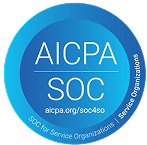FAQs
 Can Indian students get full scholarships for postgraduate degrees in the U.S. and Canada?
Can Indian students get full scholarships for postgraduate degrees in the U.S. and Canada?
Some universities and organisations offer fully-funded scholarships that cover tuition, living expenses and other costs. Canadian and U.S. postgraduate scholarships for Indian students are highly competitive, but they can significantly reduce the financial burden of studying abroad. The Fulbright-Nehru Fellowship, the Inlaks Shivdasani Foundation Scholarship and the J.N. Tata Endowment offer substantial funding specifically for Indian students. Additionally, many Indian students successfully secure teaching or research assistantships that provide tuition waivers and living stipends.
 How can I find master’s scholarships for Indian students?
How can I find master’s scholarships for Indian students?
To find scholarships for a master’s abroad, start by checking university websites, online scholarship databases and government-funded programmes. The USIEF (United States-India Educational Foundation) maintains offices in major Indian cities and provides free advising services on scholarship opportunities. Education fairs held regularly in major Indian cities also provide opportunities to meet with university representatives and learn about scholarship options. In addition, check websites including internationalscholarship.com, IEFA.com and EduPass.org.
 What factors do scholarship committees consider when reviewing applications from Indian students?
What factors do scholarship committees consider when reviewing applications from Indian students?
Most scholarship committees evaluate applications based on academic performance, leadership experience, extracurricular involvement and the quality of the personal essay. For Indian students, committees often look for strong academic records from well-regarded Indian institutions, relevant work experience, and the potential to contribute to cross-cultural understanding. Some scholarships may also prioritise financial need or community impact, and many value a commitment to returning to India to apply the knowledge gained abroad.
 Can I apply for multiple scholarships at the same time?
Can I apply for multiple scholarships at the same time?
Applying for multiple scholarships is highly recommended. Since scholarships are competitive, submitting several applications increases your chances of receiving financial aid. Many successful Indian students combine several smaller scholarships to fund their education. Keep track of different application requirements and deadlines with a spreadsheet or similar tool.
 What other sources of funding are available for Indian students pursuing graduate study abroad in the U.S. or Canada?
What other sources of funding are available for Indian students pursuing graduate study abroad in the U.S. or Canada?
In addition to scholarships for master’s degrees or doctoral degrees, Indian students can seek grants from organisations like the Science and Engineering Research Board (SERB), assistantships at universities, fellowships from foundations like the J.N. Tata Endowment, work-study opportunities and education loans from Indian banks like SBI and HDFC that offer government-backed interest subsidies for eligible students. Some companies in India, particularly IT giants like TCS, Infosys and Wipro, also fund their employees’ master’s degrees in exchange for a commitment to return to work after graduation.
